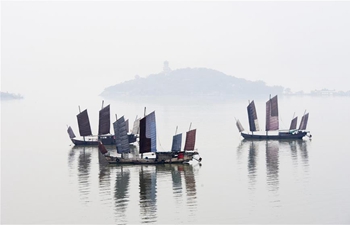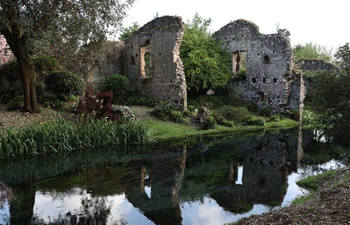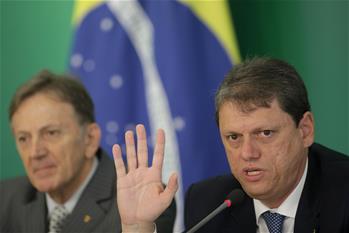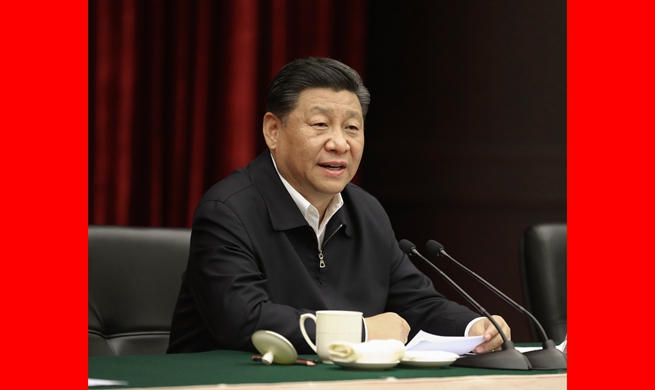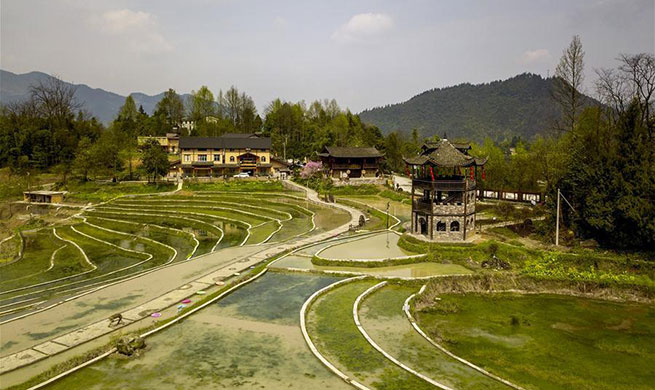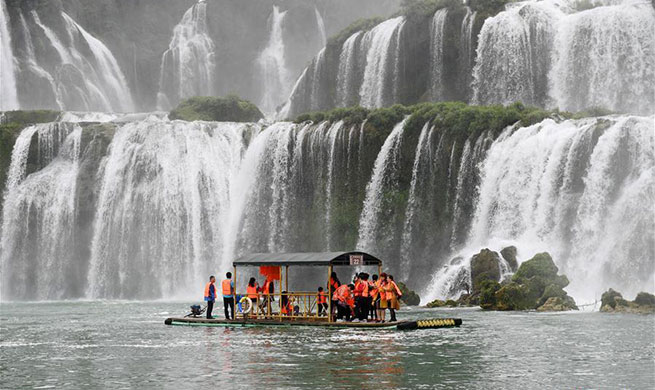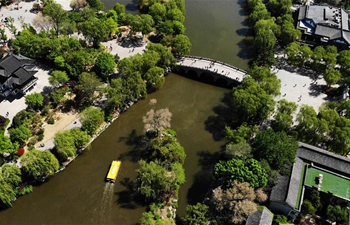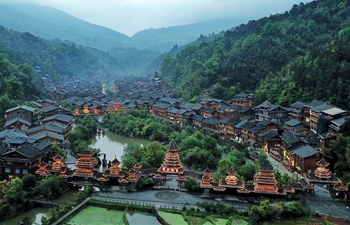ATHENS, April 17 (Xinhua) -- A statue of a young Alexander the Great riding his horse was placed in the center of Athens near the Acropolis hill and the Greek parliament on Wednesday.
Almost three decades after Greece's Culture Ministry obtained the work of Greek sculptor Yiannis Pappas and donated it to the Municipality of Athens, the 3.5-meter-high statue featuring the warrior king of the ancient Greek kingdom of Macedon found its place in the Greek capital.
Municipal workers installed it on Wednesday on a base a few meters away from the Temple of Olympian Zeus on the corner of two main avenues, while the official unveiling has been scheduled for Friday.
"Today Alexander finds his place in the country's capital. I think it was unimaginable that the greatest figure in Greek history, maybe the most recognizable figure of Greek history worldwide, had no place in the country's capital. He is the strongest brand name we possess," Giorgos Apostolopoulos, Vice Mayor of the City of Athens, told Xinhua.
Alexander the Great (356 BC-323 BC) is considered as one of the most successful military commanders in history. He led a military campaign creating an empire which reached as far away as India.
Statues of the warrior king have been erected in other parts of Greece, mainly in the north, but not Athens.
Apostolopoulos attributed the long delay in finding a suitable place for Pappas' statue of Alexander the Great in the capital mainly to bureaucratic reasons, amid scenarios that Greek authorities delayed in order not to raise tensions during efforts to resolve a row with neighboring North Macedonia.
The figure, the history and the legacy of Alexander were found in recent years at the center of the dispute between the two countries over the use of the name Macedonia.
Since 1991, when the Former Yugoslav Republic of Macedonia (FYROM) declared its independence from Yugoslavia choosing the name Macedonia, Greece strongly protested. Since a northern Greek province has the same name (Macedonia), Athens was worried that the new state may raise territorial claims.
After marathon UN-mediated negotiations, the two countries reached a deal last summer to end the row. Following constitutional amendments to ease Athens' concerns, earlier this year FYROM was renamed as North Macedonia and the two sides have stepped up efforts to strengthen bilateral cooperation in many sectors.
Regarding the history of the statue, the Vice-Mayor explained that Pappas (1913-2005) had started working on the subject in 1942. He was inspired by a sculpture of a young Alexander which is in the collection of a museum in Istanbul.
Pappas' statue of Alexander was first presented to the public in 1992 during an exhibition of his works at the National Gallery in Athens.
Although after the exhibition it passed onto the ownership of the Greek state, for many years until a few days ago it was still inside the garden of the late artist's family house and studio in an Athens neighborhood.
The cost for the installation of the statue was covered by the sculptor's family.
"There was an effort for many years to find the right place for this work which belongs to the culture ministry since 1992," told Xinhua Pantelis Nicolacopoulos, an architect who has cooperated with Pappas and in recent years assumed the task of finding the suitable place for the statue in Athens.
"The site is very interesting within the city," he said on the place he eventually suggested to the Municipality.
"I thought that the work's orientation is also very good, where Alexander is looking at...I thought that the direction of the rider's head is very interesting. He is looking towards the sea, where he headed and spread the Greek civilizations to the far East," Nicolacopoulos noted.
"We were very late, but better late than never, people say," commented Petros A. from Piraeus port, a passerby.


